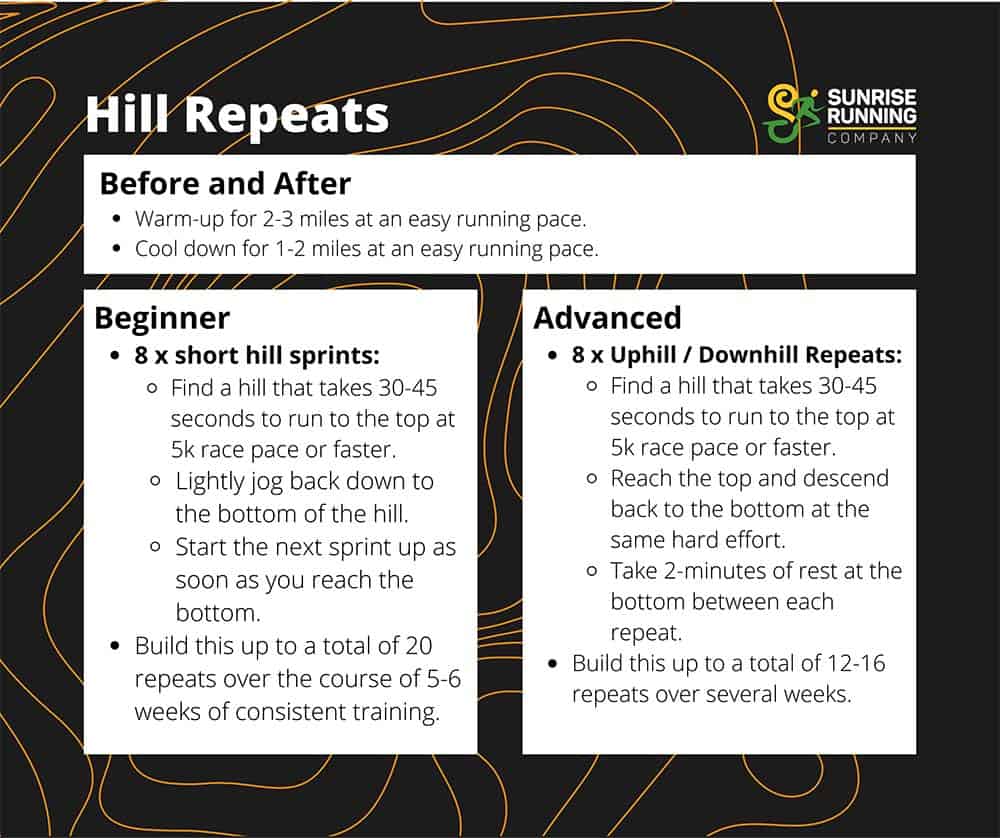Is it time for you to add hill workouts to your running routine?
If you’re like most runners, hills are probably not your favorite part of a run. They are burdensome at best and intimidating at worst, and many runners tend to avoid them while training. However, hill repeat workouts might prove to be your best friend – studies have established that there are numerous benefits of hill running workouts, including improvements in VO2 max, heart rate, speed, and endurance, and less risk of injury. Read on for more information about the benefits of hill running workouts and how to include them in your training plan.
How hills improve your running performance
Most runners know that an effective training strategy should include strength training to reduce the risk of injury and improve form. Hills are a form of dynamic strength training because you have to work against or with gravity as you run uphill or downhill. On hills, you’ll engage many of the same muscles that you would use in a squat or lunge with an added load (running uphill) or reduced load (running downhill). Existing research has established that hill training can improve VO2 max (maximal volume of oxygen intake), resting heart rate, and speed endurance among middle and long-distance runners. Another study found that hill workouts improve speed and running economy regardless of intensity – so if you’re just starting out with hill training at a lower intensity, know that you still can improve your performance.
Aside from the physiological benefits, hill running can also be great for mental training. Hills are physical obstacles that require a great deal of effort to surmount. When you repeatedly run up a hill, you’re proving to yourself that you can tackle complex and perhaps unpleasant scenarios while you run.
Hill running workouts
So when and how should you start incorporating hill running workouts into your training? While hill workouts can be beneficial at any point in your training, they are particularly helpful when you’re building your base mileage. Running uphill places less stress on your knees and hips than running on a flat surface, so hills might be recommended instead of speed work at the beginning of a training plan when your body is still adapting to the increased training load. Hill running workouts are also helpful for runners who have plateaued in pace during speed work, as hill repeats can improve speed. Finally, if your race is on hilly terrain, then hill running workouts should be a cornerstone of your training plan.
Performing your hill workouts outdoors is preferable, as this enables you to reap the benefits of both uphill and downhill running. If you live in a relatively flat area, treadmills are an excellent option for hill running, although you’ll lose the added benefits of running downhill. You might also consider taking your hill workouts to a parking garage and running at times when traffic is minimal. If you do run in a parking garage, be sure to take note of your surroundings and consider safety measures such as wearing high-visibility clothing and removing your headphones.
Once you’ve decided to incorporate hill running in your training plan, aim to add in one session every 1 to 2 weeks. There is evidence that 6-12 weeks of added hill workouts is enough to improve both speed and endurance. This example hill repeat workout from Sunrise Running Company is tailored for both beginners and more advanced runners and will help you maximize the benefits of hill training:

If you’re winded or your heart rate skyrockets when starting your hill workout, try slowing your pace (note that the training plan above calls for a 5k race pace, not a sprint). Modifications to form, such as shortening your stride, may also be helpful. When running downhill, resist the urge to sprint flat-footed and instead use your stabilizing leg muscles and a light footfall for jogging back down.
A Training Plan that Works for You.
Our collection of running plans will help you train year-round. From 5k to a 100-mile ultramarathon, we have a training plan built for your experience level and goals. Every plan is delivered via Final Surge, allowing you to sync workouts across devices, receive daily reminders of workouts and activities, and analyze workout and target zone details. Get started today with a training plan built for you, view our running plans here.










